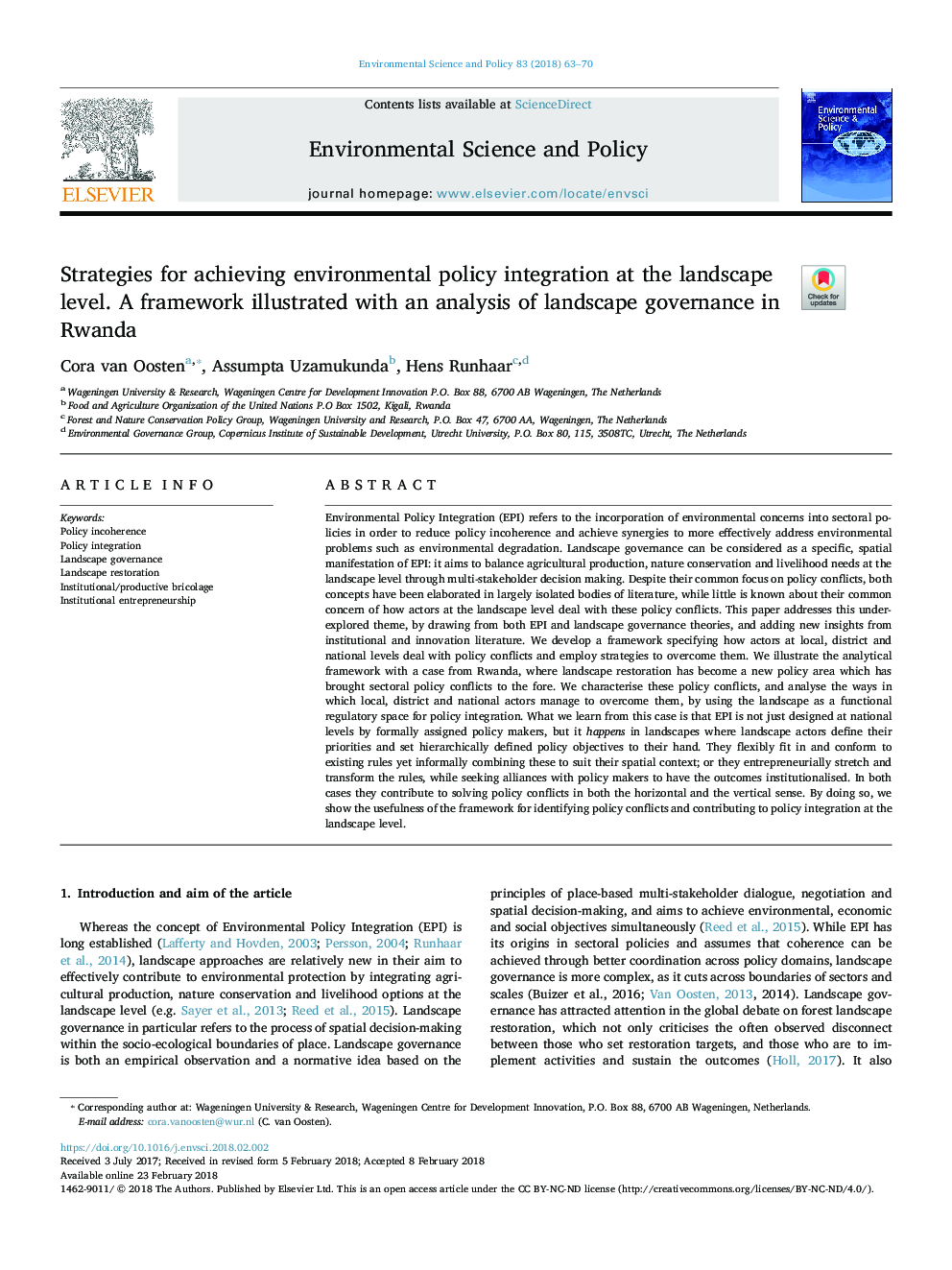| کد مقاله | کد نشریه | سال انتشار | مقاله انگلیسی | نسخه تمام متن |
|---|---|---|---|---|
| 7466134 | 1485025 | 2018 | 8 صفحه PDF | دانلود رایگان |
عنوان انگلیسی مقاله ISI
Strategies for achieving environmental policy integration at the landscape level. A framework illustrated with an analysis of landscape governance in Rwanda
ترجمه فارسی عنوان
استراتژی برای دستیابی به ادغام سیاست های زیست محیطی در سطح چشم انداز. یک چارچوب نشان داده شده با تجزیه و تحلیل حکمرانی چشم انداز در رواندا
دانلود مقاله + سفارش ترجمه
دانلود مقاله ISI انگلیسی
رایگان برای ایرانیان
کلمات کلیدی
موضوعات مرتبط
مهندسی و علوم پایه
مهندسی انرژی
انرژی های تجدید پذیر، توسعه پایدار و محیط زیست
چکیده انگلیسی
Environmental Policy Integration (EPI) refers to the incorporation of environmental concerns into sectoral policies in order to reduce policy incoherence and achieve synergies to more effectively address environmental problems such as environmental degradation. Landscape governance can be considered as a specific, spatial manifestation of EPI: it aims to balance agricultural production, nature conservation and livelihood needs at the landscape level through multi-stakeholder decision making. Despite their common focus on policy conflicts, both concepts have been elaborated in largely isolated bodies of literature, while little is known about their common concern of how actors at the landscape level deal with these policy conflicts. This paper addresses this under-explored theme, by drawing from both EPI and landscape governance theories, and adding new insights from institutional and innovation literature. We develop a framework specifying how actors at local, district and national levels deal with policy conflicts and employ strategies to overcome them. We illustrate the analytical framework with a case from Rwanda, where landscape restoration has become a new policy area which has brought sectoral policy conflicts to the fore. We characterise these policy conflicts, and analyse the ways in which local, district and national actors manage to overcome them, by using the landscape as a functional regulatory space for policy integration. What we learn from this case is that EPI is not just designed at national levels by formally assigned policy makers, but it happens in landscapes where landscape actors define their priorities and set hierarchically defined policy objectives to their hand. They flexibly fit in and conform to existing rules yet informally combining these to suit their spatial context; or they entrepreneurially stretch and transform the rules, while seeking alliances with policy makers to have the outcomes institutionalised. In both cases they contribute to solving policy conflicts in both the horizontal and the vertical sense. By doing so, we show the usefulness of the framework for identifying policy conflicts and contributing to policy integration at the landscape level.
ناشر
Database: Elsevier - ScienceDirect (ساینس دایرکت)
Journal: Environmental Science & Policy - Volume 83, May 2018, Pages 63-70
Journal: Environmental Science & Policy - Volume 83, May 2018, Pages 63-70
نویسندگان
Cora van Oosten, Assumpta Uzamukunda, Hens Runhaar,
